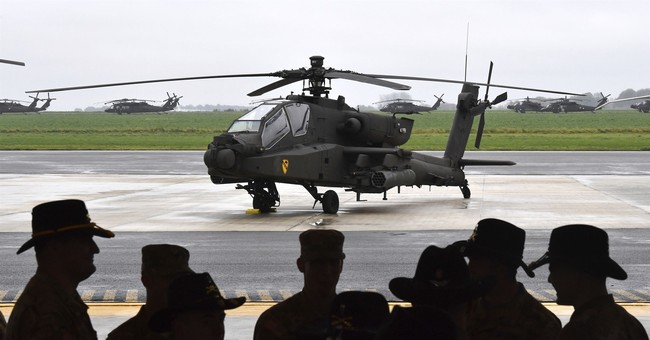Doc7505
Diamond Member
- Feb 16, 2016
- 15,717
- 27,674
- 2,430
Army:
Now that you ask, we really don't know where all of our weapons are
12 Oct 2023 ~~ By Jazz ShawIt’s well known that the United States Army and Marines maintain a significant stockpile of used, damaged, or older models of weapons. Some are damaged and waiting to be safely salvaged, but many of them are still functional, requiring a bit of cleaning or maintenance. Some may be perfectly fine, but they’ve been replaced by newer models. Now that our allies in Israel are rushing to outfit an expanded military force to take on Hamas and their civilians are looking for hardware also, someone finally thought to ask the army about those stockpiles and how we could ship out the usable equipment to help our friends. But they answer they received from Army Undersecretary Gabe Camarillo on Tuesday basically amounted to, ‘Weapons? Did you say weapons? Let’s see… where did we put those…’ (Government Executive)
The U.S. Army has warehouses packed with weapons its soldiers no longer need. But the service doesn’t know where they all are, nor what condition they’re in.
Now, amid increased demand from U.S. allies and partners, Army leaders are pushing for an updated database of those stored weapons.
“Sometimes we don’t really know where all of our excess equipment is,” Army Undersecretary Gabe Camarillo said Tuesday at the Association of the U.S. Army annual conference in Washington. “We have a lot of it, and it’s accumulated over time.”
We’re not talking about the big-ticket military equipment here. When it comes to our most advanced fighter jets, submarines, long-range precision missiles and ICBMS, we’re pretty good about keeping track of those. But the stockpiles in question involve more conventional rifles, sidearms, ammunition, and maybe some shoulder-fired rockets. They get shuffled around a lot in various warehouses across the country and around the world. And we obviously don’t know precisely where some of them are in case they need to be shipped out or, in some cases, if we even still have them. And that’s a problem.~Snip~
Should we be surprised? Keep in mind we’re not talking about rank-and-file war fighters and officers here. They are the best we have to offer, though you will occasionally run into a bad apple or two. But in the upper ranks of the Pentagon, there seem to be too many people who take that massive budget for granted and don’t spend much time worrying about accountability because they know the checks will keep on flowing.
Remember that this is the same Pentagon that accidentally “found” six billion dollars in Military gear for Ukraine so Congress wouldn’t have to appropriate more money at that time. Granted, that turned out to be more an instance of creative bookkeeping than literally discovering an Indiana Jones-style warehouse full of bombs and rockets and Howitzer shells. But you get the drift. And let’s not forget that the Pentagon has never successfully completed an audit even though it’s required under federal law. We don’t know how much gear we have, to say nothing of exactly where it all is.
The Pentagon has long believed that they don’t need to be accountable and we’ve given them every reason to feel that way. I’m not saying we need to slash their budget. We need a strong military now more than ever. But we should also be investing in some external observers and auditors who can monitor the supply chain systems and be able to locate what we need when we need it. They should also be getting rid of the old, useless stuff more efficiently. It could save us some money by unloading some of it and free up storage space. We could do a lot better and from the sounds of this week’s reports we really need to.
Commentary:
Obviously they're acting dumb, like they don’t know where they are. They know. First off ask Milley and Austin. Surely there's all that military equipment and ordinance they left in Afghanistan for starters.
According to military regulations, for each of those weapons is a Staff NCO who knows by serial number exactly where it is.
For every round of ammunition there is a Staff NCO who knows by lot number and count where every round is.
The “Magnificent Millie” trained officer corps may well be as incompetent and ignorant as the article and the Undersecretary claim, but there is a professional soldier that knows.
However, it is within the realm of possibility that some of the weapons and ammunition are not exactly in the Army’s inventory system. IYKWIMAITYD.


